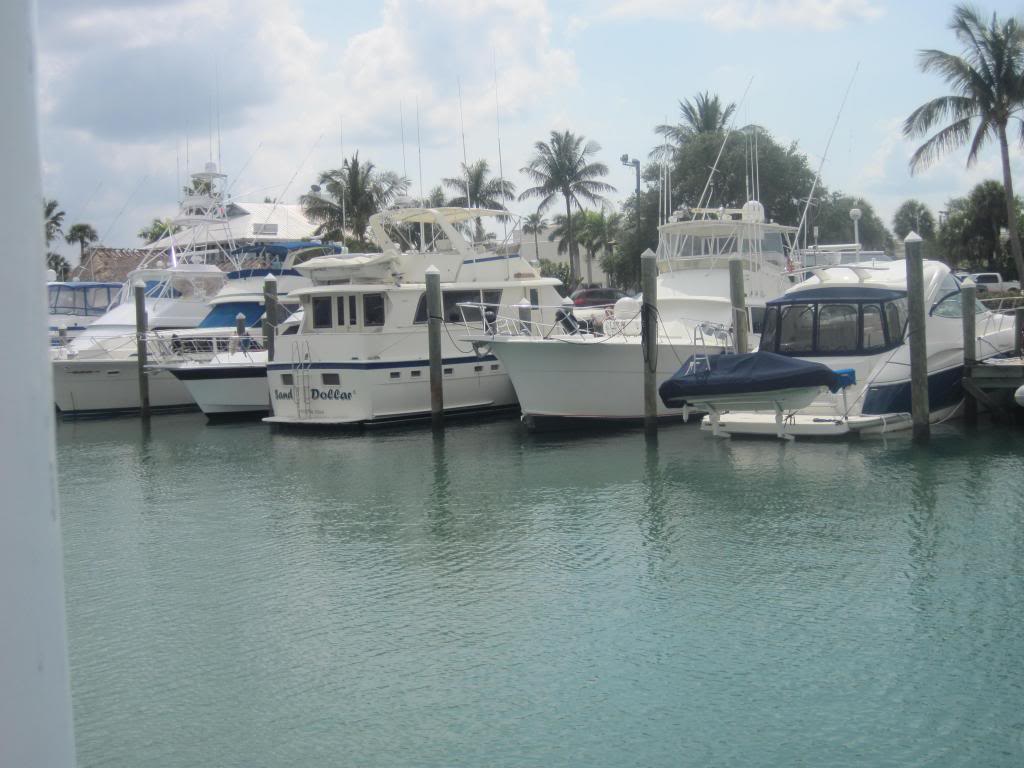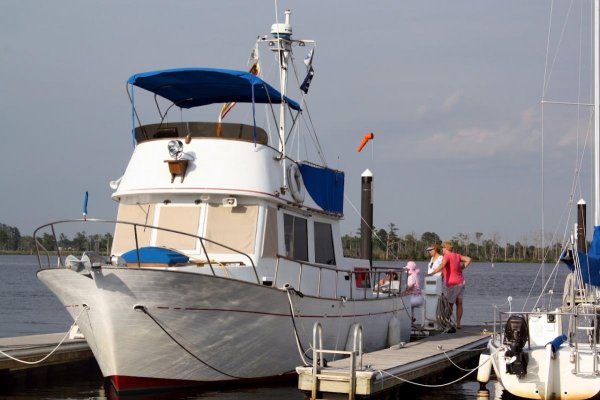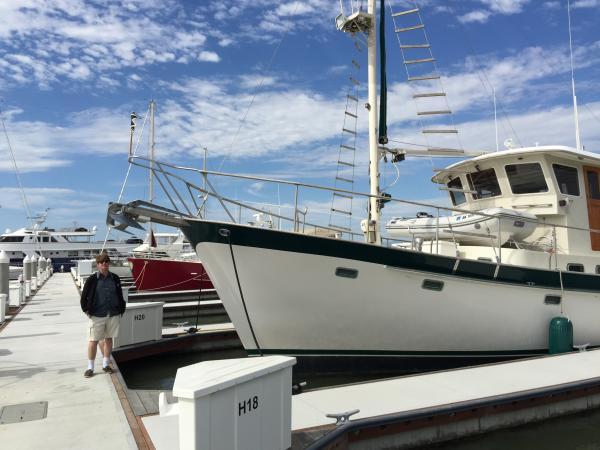I think this thread has mostly been focusing about the wrong thing, and that's the boater's ability to get the thing to a dock or into a slip single handed, or sightlines from the helm and so forth.
That's part of the story, sure. But I think the far more important thing to be considering with regards to single handing a boat is what's that boat going to be like on the day the wind's blowing the wrong way at 15 or 20 knots? Or the current is trying to carry the boat in exactly the wrong direction? Or, as often happens in our waters, both of those?
I've seen-- and probably most people on this forum have, too-- people in dinghies having a terrible time at a dock because of wind or current or both. I've been on hand when friends with a 26' Tollycraft needed three people on the boat and one on the dock to get the thing into a slip with no panic, confusion or damage.
This had zip to do with the boaters' abilities; everyone on that Tollycraft was an experienced driver of that boat. It had to do with the nasty wind they were having to deal with.
We tend to think about maneuvering or docking a boat under ideal conditions-- no wind, no current, no rain, nice sunny day. Maybe that's the norm where one boats. If it is, a person could probably single hand the Nimitz.
I could single hand our 30,000 pound, 36' cabin cruiser easily on a sales-brochure day. But I will never single hand this boat (except in an emergency) because I have long since learned what this boat can turn into when the wind and currects kick up around here. There have been times when it's come close to being too much for my wife and I to handle.
So far in 17 years we've only been defeated once and that was in our own slip when it was so windy I came in with more speed and my wife was unable to get our permanent spring on the midships cleat because the boat moved past the length of the line too soon. The line fell into the water, we were seconds from being blown onto our neighbor so I backed out fast and we went to an empty slip on another dock where the wind would blow us onto the finger, not off of it. Told the port where we were and why, they said fine, and we came back the following weekend and moved the boat back across.
So if one is contemplating buying a boat they can single hand, don't envision youself doing this on the ideal dead calm day. Envision doing it on a 15 knot, wrong-direction wind day.
People, including me, don't think 15 knots is a lot of wind. It's not when you're out on the water driving around in it. It can seem a hurricane when you're trying to get into a tight slip or space on a dock and you find youself having to manhandle the boat.
Unless, of course one is going to be boating single-handed on a lake and only on days when there is not even a puff of a breeze. Then the size of the boat becones almost irrelevent other than its inertia.
That's part of the story, sure. But I think the far more important thing to be considering with regards to single handing a boat is what's that boat going to be like on the day the wind's blowing the wrong way at 15 or 20 knots? Or the current is trying to carry the boat in exactly the wrong direction? Or, as often happens in our waters, both of those?
I've seen-- and probably most people on this forum have, too-- people in dinghies having a terrible time at a dock because of wind or current or both. I've been on hand when friends with a 26' Tollycraft needed three people on the boat and one on the dock to get the thing into a slip with no panic, confusion or damage.
This had zip to do with the boaters' abilities; everyone on that Tollycraft was an experienced driver of that boat. It had to do with the nasty wind they were having to deal with.
We tend to think about maneuvering or docking a boat under ideal conditions-- no wind, no current, no rain, nice sunny day. Maybe that's the norm where one boats. If it is, a person could probably single hand the Nimitz.
I could single hand our 30,000 pound, 36' cabin cruiser easily on a sales-brochure day. But I will never single hand this boat (except in an emergency) because I have long since learned what this boat can turn into when the wind and currects kick up around here. There have been times when it's come close to being too much for my wife and I to handle.
So far in 17 years we've only been defeated once and that was in our own slip when it was so windy I came in with more speed and my wife was unable to get our permanent spring on the midships cleat because the boat moved past the length of the line too soon. The line fell into the water, we were seconds from being blown onto our neighbor so I backed out fast and we went to an empty slip on another dock where the wind would blow us onto the finger, not off of it. Told the port where we were and why, they said fine, and we came back the following weekend and moved the boat back across.
So if one is contemplating buying a boat they can single hand, don't envision youself doing this on the ideal dead calm day. Envision doing it on a 15 knot, wrong-direction wind day.
People, including me, don't think 15 knots is a lot of wind. It's not when you're out on the water driving around in it. It can seem a hurricane when you're trying to get into a tight slip or space on a dock and you find youself having to manhandle the boat.
Unless, of course one is going to be boating single-handed on a lake and only on days when there is not even a puff of a breeze. Then the size of the boat becones almost irrelevent other than its inertia.
Last edited:









